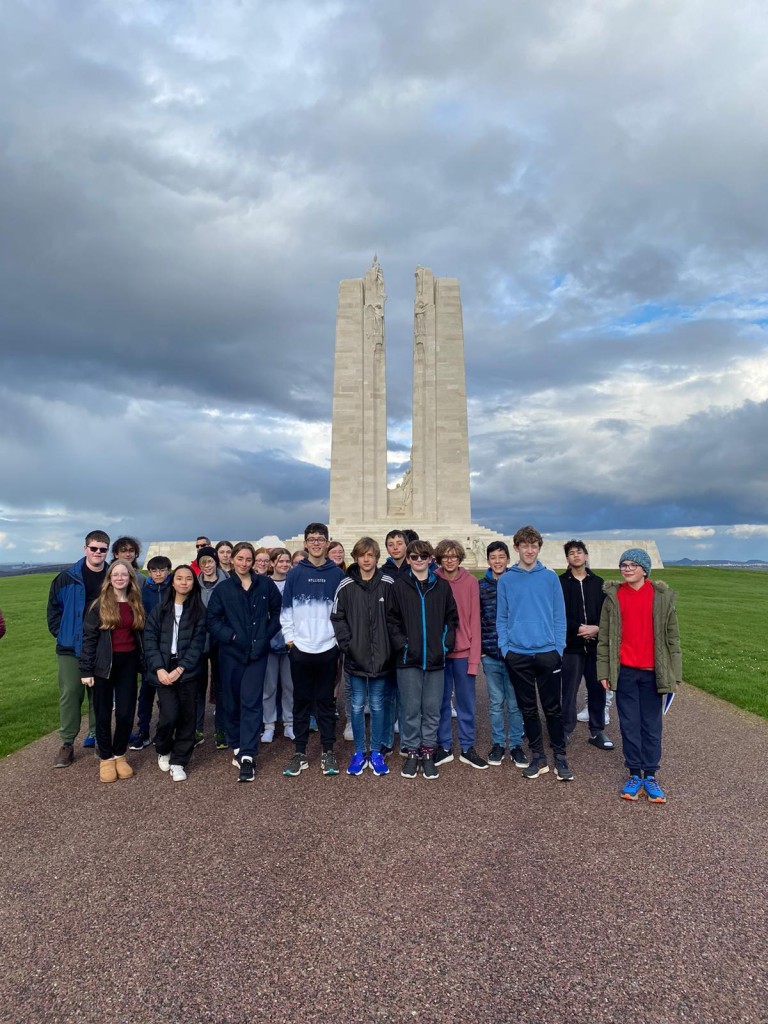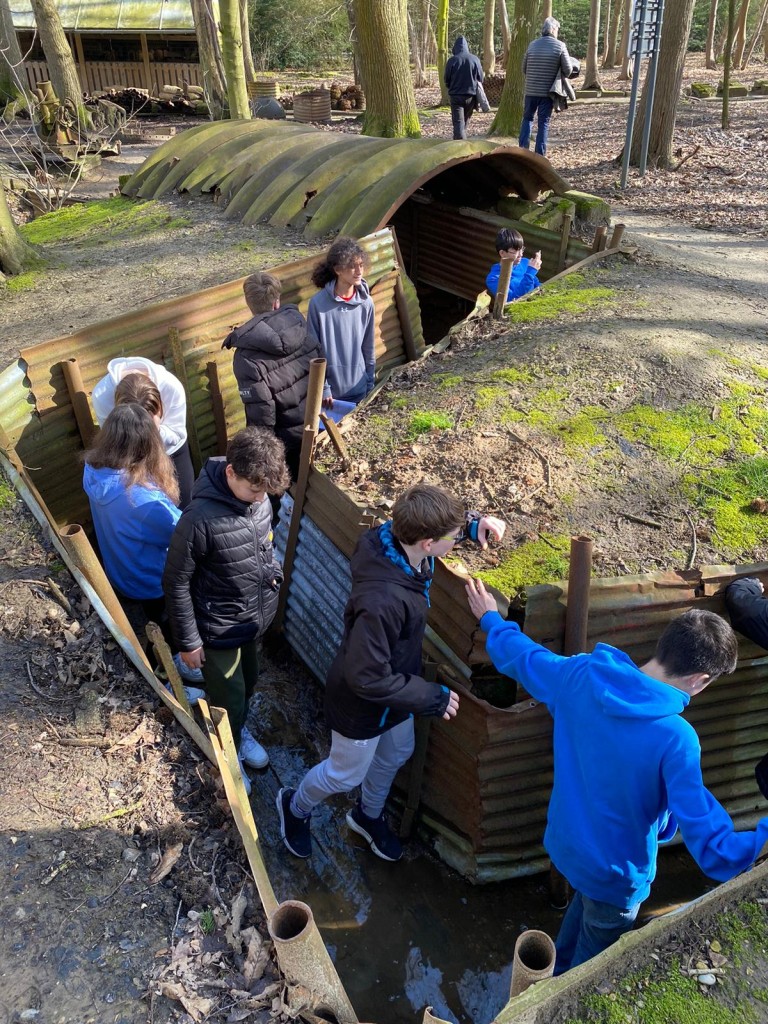 I was lucky enough to get to go on the Belgium trip at the beginning of March. We went to Ypres, near the French border. Here’s how the week unfolded:
I was lucky enough to get to go on the Belgium trip at the beginning of March. We went to Ypres, near the French border. Here’s how the week unfolded:
Tuesday
We started bright and early on the Tuesday, leaving school around 6:30am to catch our ferry at just after noon from Dover.
After arriving in Calais, we headed straight to our first war memorial of the trip: Vimy Ridge in northern France. This memorial, in the form of two very striking white limestone pillars visible for miles around, is dedicated to the thousands of Canadians who died in WW1 with no known grave. At the nearby museum, we looked around the trench exhibit which gave us a sense of how small the trenches were that the soldiers had to fight in!
Finally, we headed for our hotel in Ypres, where we had dinner and settled down for a good night’s sleep!
Wednesday
Wednesday was our day to explore Ypres and its surroundings. We started with the Menin Gate, a giant arch with the names of over 54,000 soldiers who died in WW1 around Ypres and have no known grave. Sadly, it was hidden by scaffolding for refurbishing work!
We then proceeded through the colossal arch to the In Flanders Fields exhibition. Here, we learned about the personal lives of some of the people with stories related to the war, learned the history behind a pair of trousers and saw a setup of a tunnel that the Germans would have dug, and more! We also worked through what seemed like an encyclopedia of questions to answer in our activity booklets, before getting captivated by the LEGO model of the museum by the exit! After this, the entire group crammed themselves into a tiny chocolate shop and bought lots of chocolate.
Our next visit was to Hill 62. The highlight of this incredibly small museum was the trench exhibit: muddy, wet, dark tunnels. Some people were unfortunate enough to go in the model trenches with sparkling white shoes and come out with them soaking and covered in mud.
We then visited a variety of cemeteries around Ypres: Tyne Cot was a massive Commonwealth cemetery that we all looked for our own names on; Essex Farm, another Commonwealth cemetery, had a small exhibition of the types of field hospitals where John McCrae, who wrote In Flanders Fields, worked; and Langemarck was extremely eye-opening. It is a German cemetery, but, unlike the Commonwealth cemeteries, it is tiny and there are lots of mass graves- the Allies did not want to give Germany lots of space to bury their dead. It really was very humbling.
Thursday
This was our big driving day, as we visited three sites clustered together about two hours from Ypres in northern France. The first was Lochnagar Crater. 27 tons of explosives were placed underground by the British in 1916 in an attempt to break through the German lines. The attempt failed, and the British troops got massacred in what is now known as the first day of the Battle of the Somme, often considered the worst day in British military history.
After this, we headed to the Thiepval Memorial, a gigantic memorial to soldiers killed in the Battle of the Somme with no known grave. The scale of it was jaw-dropping: a gigantic arch, 45 metres high, with several surrounding arches. Stone panels around it were full of names. More than anything else, this gave us a sheer sense of the loss that happened in the Great War.
Our final cemetery of the tour was Newfoundland Park, a Canadian cemetery. The highlight of this was the giant caribou statue in the middle, looking out to where Newfoundlanders fought and died in the Somme. Like at Vimy Ridge earlier in the week, you could see the dips in the ground caused by the constant shelling.
We then returned to Ypres and took part in a fun quiz, testing us on whether we had remembered anything from our trip!
Friday
After three days of cemeteries, Friday was our fun day. We got to go to Bruges and, after going on a canal cruise, got free time to buy lunch, chocolate, waffles and souvenirs. The architecture was grand, and there was a very old-world feel, only amplified by the horses and carts giving people tours!
After spending an exorbitant amount on food we returned, tired and high on waffles, to our coach. After leaving Bruges at 2pm, we arrived back at school at 9pm, full of the joys of a trip that was, on the whole, quite good!
- Callum Reynolds, Year 9
